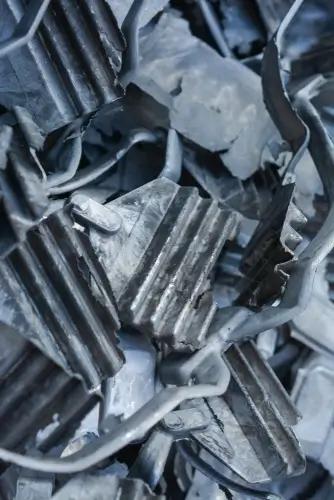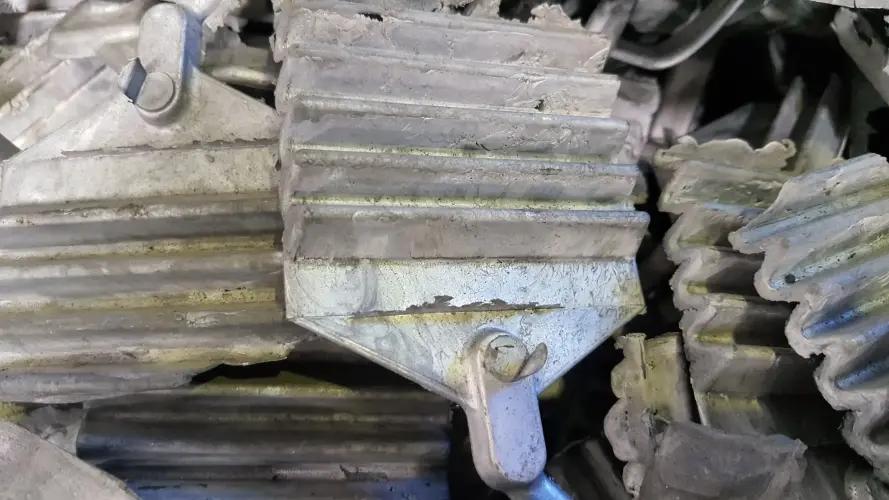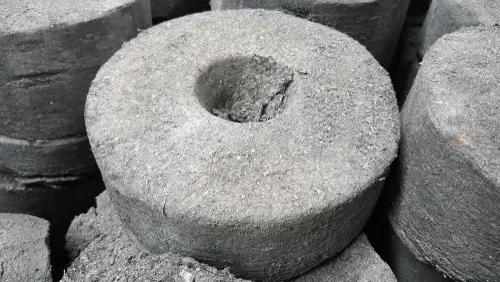Magnesium scrap: a renewable resource for circular economy
The basics about magnesium
Magnesium, a crucial element in both nature and industry, plays a fundamental role in various aspects of our lives. As one of the most abundant elements in the Earth's crust, it boasts a wide array of applications ranging from healthcare to manufacturing. Chemically, it's a lightweight metal known for its remarkable strength-to-weight ratio, making it a popular choice in aerospace and automotive industries for lightweight structural components. Beyond its industrial uses, magnesium is also vital for biological functions, being an essential nutrient for human health. Found in green leafy vegetables, nuts, seeds, and whole grains, it contributes to bone health, muscle function, and energy production within the body. Its versatility, abundance, and importance across multiple sectors underscore magnesium's significance in our modern world.

Which are the most common economic uses of magnesium?
Magnesium boasts a diverse range of economic applications across industries due to its unique properties. In the automotive sector, magnesium's lightweight yet sturdy nature makes it an ideal material for manufacturing components like engine blocks, transmission cases, and steering columns, contributing to enhanced fuel efficiency and overall vehicle performance. Similarly, in aerospace, magnesium's high strength-to-weight ratio finds extensive use in aircraft construction, reducing weight and fuel consumption. The electronics industry benefits from magnesium's durability and electromagnetic shielding properties, employing it in the production of casings for smartphones, laptops, and other electronic devices. Construction sectors utilize magnesium alloys for their corrosion resistance and strength in structures like scaffolding and roofing materials. Moreover, magnesium compounds play vital roles in healthcare, particularly in pharmaceuticals and medical treatments.
The magnesium recycling journey and its challenges
The journey of magnesium recycling is a multifaceted process, marked by both advancements and challenges. Recycling magnesium presents a promising avenue for sustainability, resource conservation, and economic efficiency. However, it comes with its set of unique challenges that need to be addressed for its widespread adoption. Magnesium recycling typically begins with the collection of scrap materials, which can originate from various sources such as manufacturing processes, end-of-life products, and industrial residues. These scraps undergo sorting, cleaning, and processing to remove impurities and contaminants. Depending on the quality and composition of the scrap, different recycling methods may be employed, including thermal reduction, remelting, or chemical processes. One of the primary challenges in magnesium recycling lies in the collection and separation of scrap materials. Unlike more commonly recycled metals like aluminum and steel, magnesium scrap is
is relatively less abundant and dispersed across diverse industries. Additionally, magnesium alloys often contain other metals and impurities, making separation and purification processes more complex and costly. Furthermore, the diversity of magnesium alloys used in different applications poses a challenge for efficient recycling. Each alloy may have distinct compositions and properties, requiring tailored recycling processes and technologies. This diversity complicates the sorting and separation of magnesium scrap, as well as the quality control of recycled magnesium products. Another significant challenge in magnesium recycling is the energy-intensive nature of certain recycling methods. For instance, thermal reduction processes, such as the Pidgeon process, require high temperatures and energy inputs, leading to increased carbon emissions and environmental impact.

Where does magnesium scrap come from?
End-of-life products
Manufacturing processes
Industrial residues
Post-consumer recycling

Types of scrap magnesium
ISRI, the Institute of Scrap Recycling Industries, classifies magnesium scrap into several distinct types based on its composition, form, and source. These types include Clean Magnesium Scrap, which comprises uncontaminated magnesium pieces generated from manufacturing processes or end-of-life products. Mixed Magnesium Scrap encompasses magnesium materials with varying compositions and may contain other metals, alloys, or contaminants. Magnesium Turnings refer to small, curly or spiral-shaped pieces produced during machining or fabrication operations. Magnesium Dross and Slag are residues from refining or processing operations, containing impurities and by-products. Lastly, Magnesium Shavings and Borings consist of small fragments generated during machining or drilling, often requiring cleaning before recycling.
Recycling scrap magnesium offers significant environmental benefits by reducing the need for primary magnesium production, which typically involves energy-intensive processes and emissions.
Additionally, recycling magnesium scrap conserves valuable natural resources and mitigates waste disposal challenges, contributing to a more sustainable and circular economy.


What are the top three countries that buy magnesium scrap?

China
China has been a significant importer of magnesium scrap due to its strong demand for magnesium and magnesium alloys in various industries, including automotive, aerospace, and electronics.

South Korea
South Korea is another major importer of magnesium scrap, particularly for its manufacturing sector, which utilizes magnesium and magnesium alloys in automotive components, electronics, and industrial machinery.

Japan
Japan is a significant importer of magnesium scrap, primarily for its automotive and manufacturing industries. Japan's advanced automotive sector relies on magnesium and magnesium alloys for lightweighting and improving fuel efficiency in vehicles.

Buying and selling scrap magnesium with METYCLE
At METYCLE we buy and sell all types of magnesium, especially wafer, walnut, wood and world (as specified and defined by ISRI (Institute of Scrap Recycling Industries). We are metal specialists who will work closely with you to either find the best magnesium for your requirements or to create immensely scalable business for your scrap magnesium. Get in touch with us today to partner up with the world's leading scrap metal marketplace! We are based in Germany, and through us you get access to hundreds of suppliers and thousands of products - all while enjoying hassle-free shipping and customs and favourable payment terms.
Read more
Recycle metals with us
Recycle metals with us
Our metals
- Aluminum: the economic impact of recycling
- Copper: uncovering the sustainable scrap cycle
- Lead: the journey of scrap metal recycling towards a greener future
- Magnesium: scrap as a renewable resource for circular economy
- Nickel: scrap recycling as a value maximizer for sustainable industry growth
- Zinc: the sustainable promise of scrap recycling
Inside METYCLE
Inside METYCLE
Engineering and Technology at Metycle
Want to stay updated via WhatsApp?
Stay ahead with METYCLE's products! Join our WhatsApp broadcast channel to receive real-time updates on available metals and unbeatable deals. Explore our current product offerings and never miss out on the best opportunities!
© 2025 METYCLE
